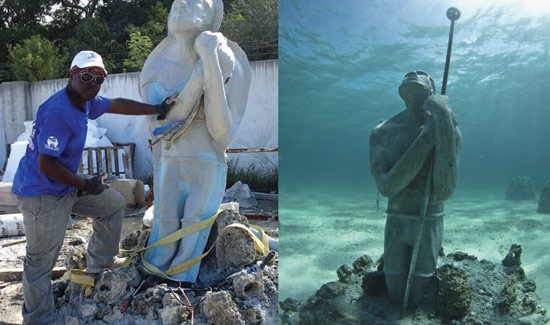New evidence gathered from coral reef fossils suggests that sea levels fluctuated by 13 to 20 feet within the span of just a few thousands of years during a warm interglacial period known as the Eemian Age, about 125,000 years ago.
“This was the last time that climate was as warm as — or warmer than — today,” said William G. Thompson, a geochronologist with the Woods Hole Oceanographic Institution. “If today’s ice sheets continue to melt, we may be headed for a period of ice sheet and sea-level change that is more dynamic than current observations of ice sheets suggest.”
The researchers used data from an improved method of dating fossil coral reef skeletons in the Bahamas, finding that sea levels were considerably less stable than earlier believed.
Because coral reefs grow near the sea surface, they are accurate markers of former sea levels. At the study area in the Bahamas, two fossil reefs are separated by an erosional surface that was cut by wave action. The first reef grew when sea levels were about 13 feet higher than today.
“The fall of sea-level is indicated by the wave-cut erosion of this first reef,” said Wilson, “and the second sea-level rise was recorded by the growth of new corals on this eroded surface. The dating of fossil corals below and above this erosional surface, using our new methods, reveals important details about the timing of sea-level change that were previously obscured.”



